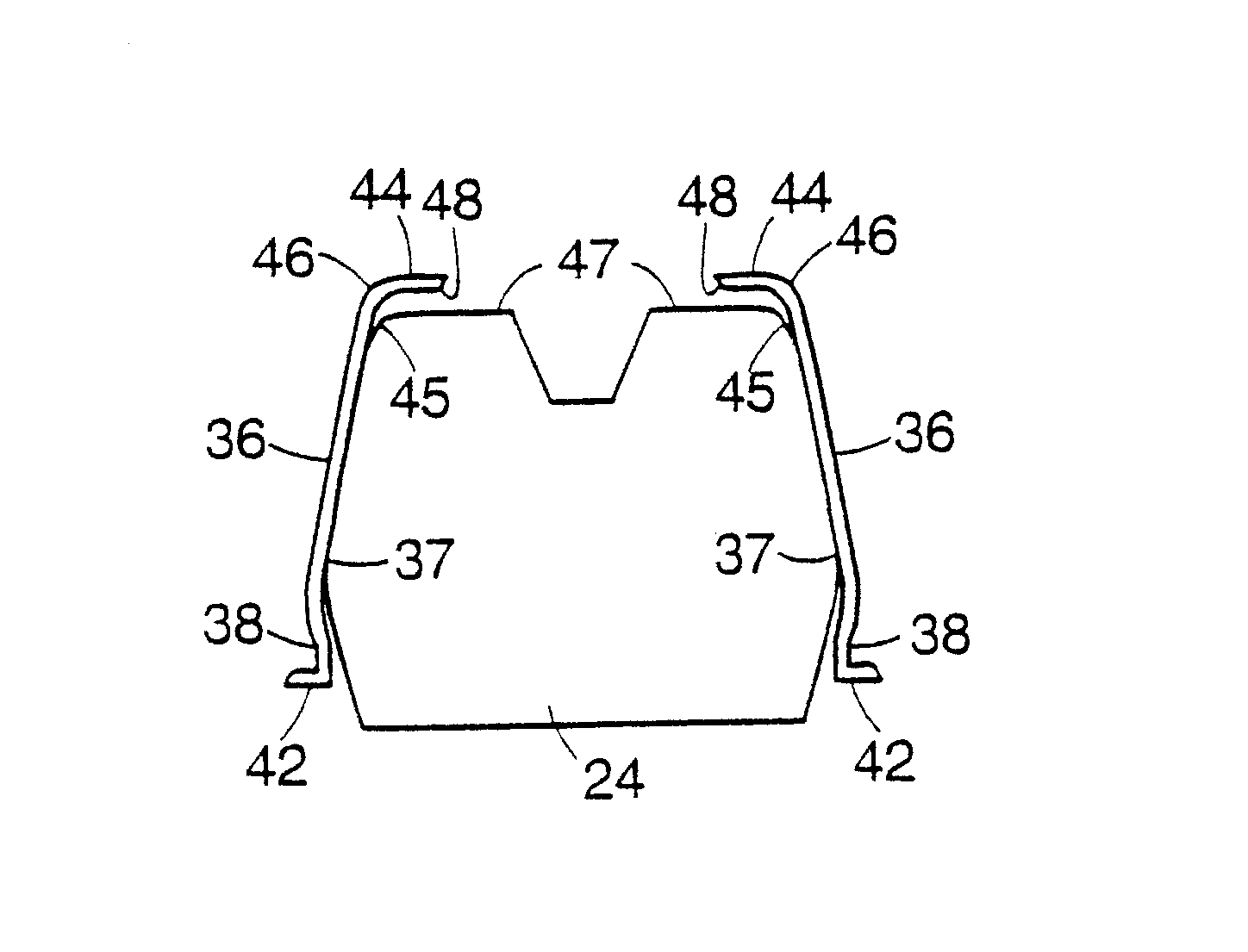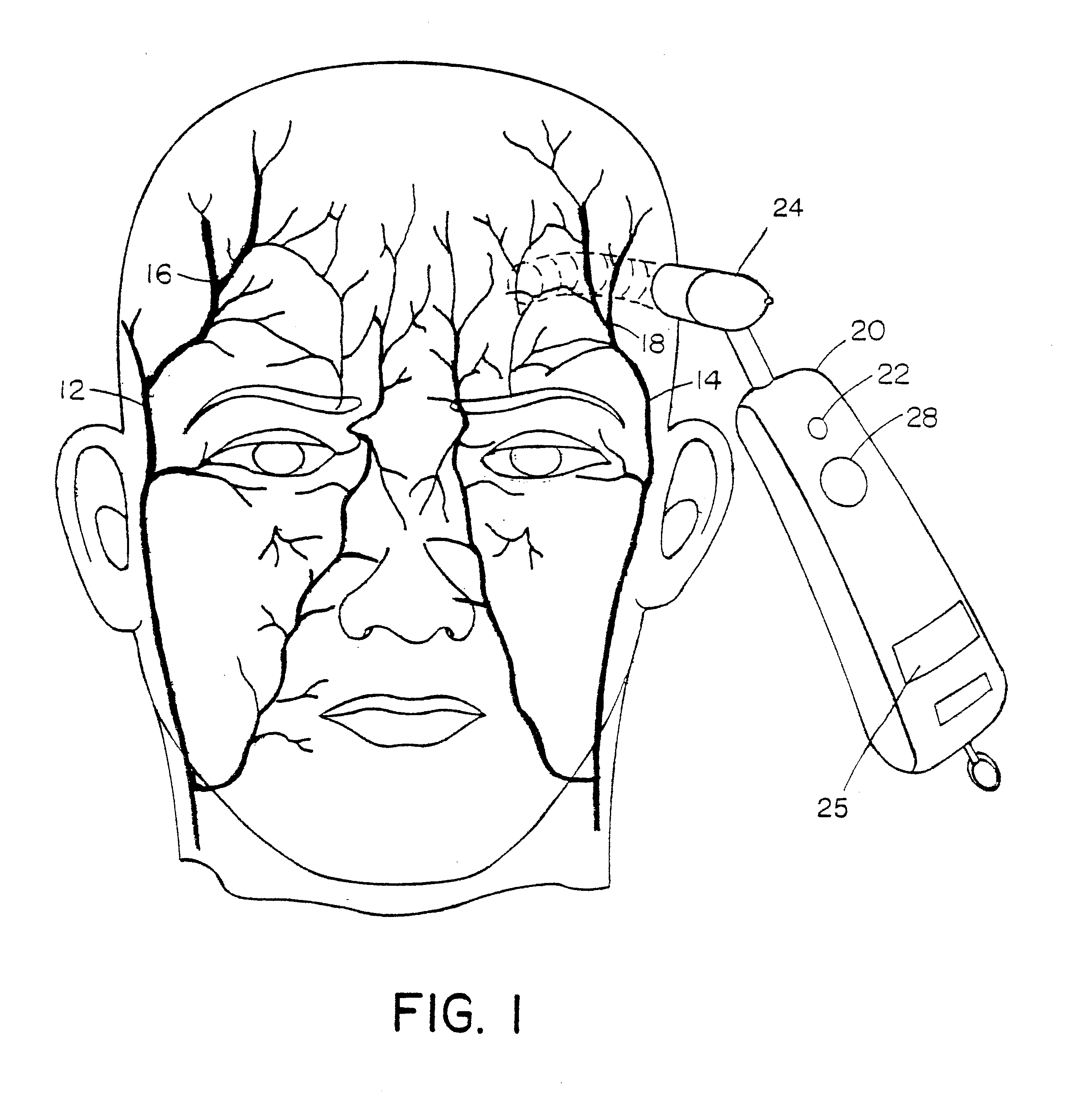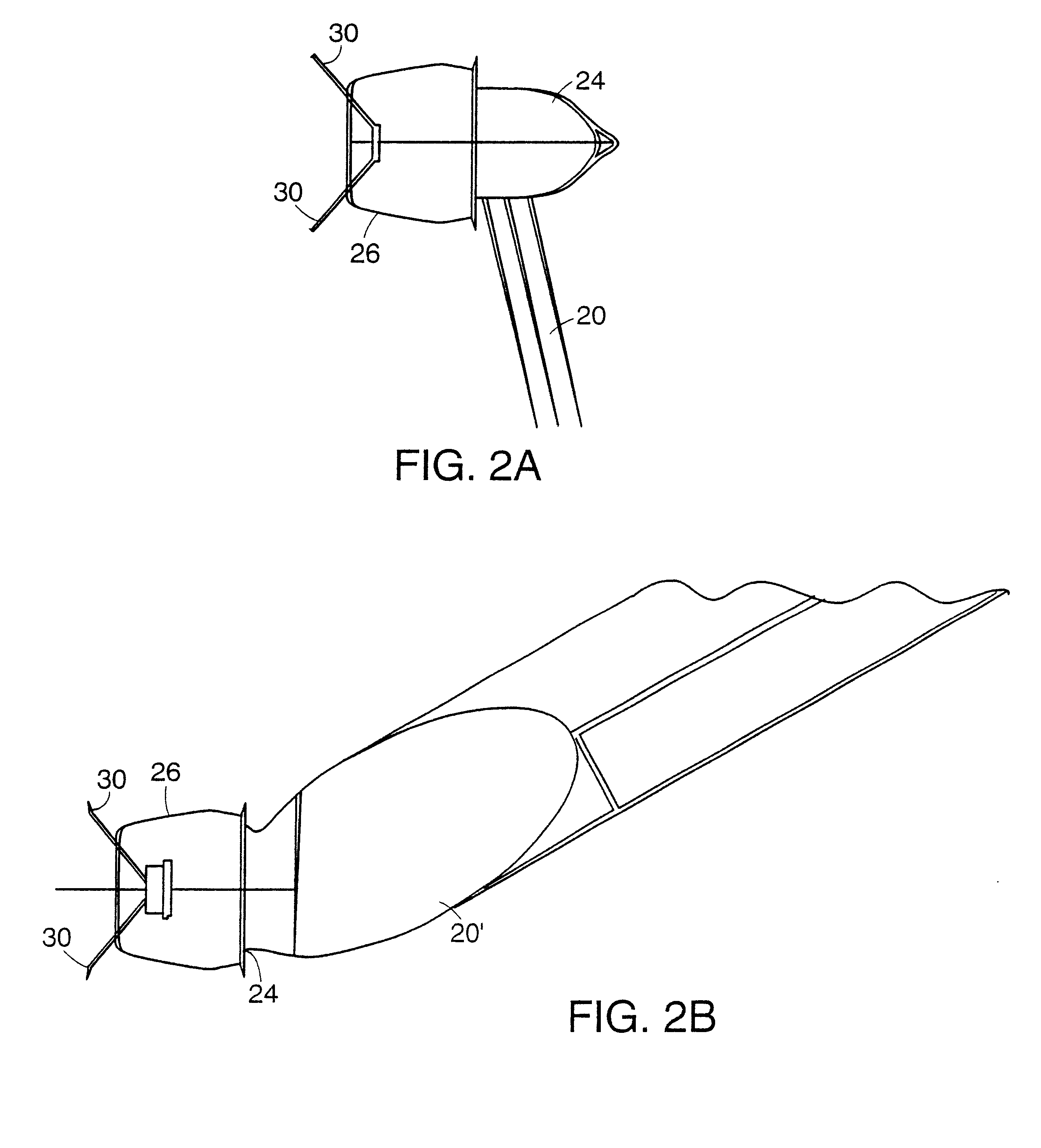Temporal thermometer disposable cap
a technology of thermometers and caps, which is applied in the field of infrared thermometers, can solve the problems of large temperature change at the artery and inaccessible at the skin, and achieve the effect of convenient temperature readings
- Summary
- Abstract
- Description
- Claims
- Application Information
AI Technical Summary
Benefits of technology
Problems solved by technology
Method used
Image
Examples
Embodiment Construction
[0034]As illustrated in FIG. 1, the temporal arteries 12 and 14 extend upwardly toward the side of the human face and bifurcate at 16 and 18 in the forehead region. In that region, the temporal artery passes over the skull bone very close to the skin and is thus termed the superficial temporal artery. The superficial temporal artery is, therefore, particularly accessible for providing temperature readings and, as an artery, has a temperature close to the heart temperature. Further, there are no known arterial / venus anastomoses, that is, shunts between the artery and veins for regulation of skin temperature. Accordingly, the blood flow is relatively stable, varying very little compared to other areas of the skin.
[0035]To locate the temporal artery, a temperature sensor, preferably a radiation temperature detector 20, is scanned across the side of the forehead over the temporal artery while electronics in the detector search for the peak reading which indicates the temporal artery. Pr...
PUM
| Property | Measurement | Unit |
|---|---|---|
| thickness | aaaaa | aaaaa |
| diameter | aaaaa | aaaaa |
| diameter | aaaaa | aaaaa |
Abstract
Description
Claims
Application Information
 Login to View More
Login to View More - R&D
- Intellectual Property
- Life Sciences
- Materials
- Tech Scout
- Unparalleled Data Quality
- Higher Quality Content
- 60% Fewer Hallucinations
Browse by: Latest US Patents, China's latest patents, Technical Efficacy Thesaurus, Application Domain, Technology Topic, Popular Technical Reports.
© 2025 PatSnap. All rights reserved.Legal|Privacy policy|Modern Slavery Act Transparency Statement|Sitemap|About US| Contact US: help@patsnap.com



